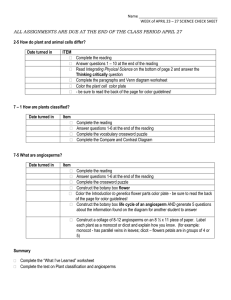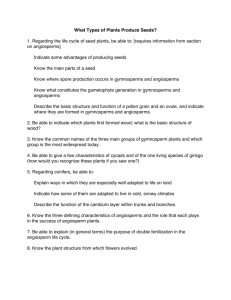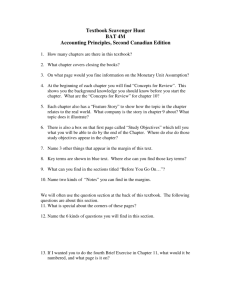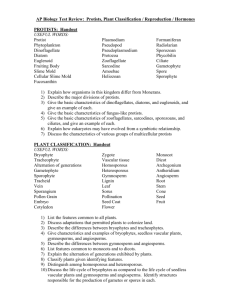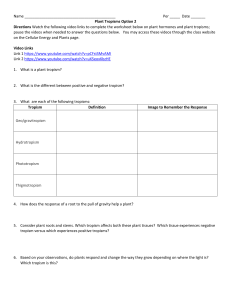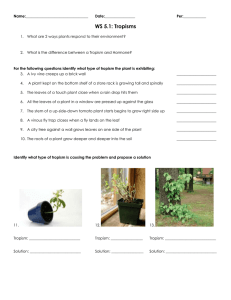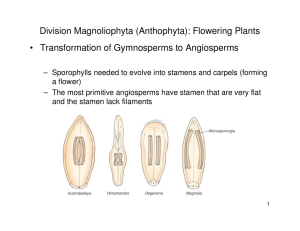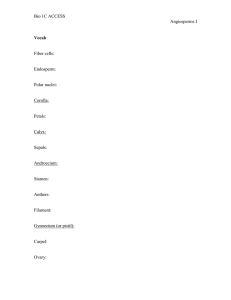Plant Worksheet Packet
advertisement
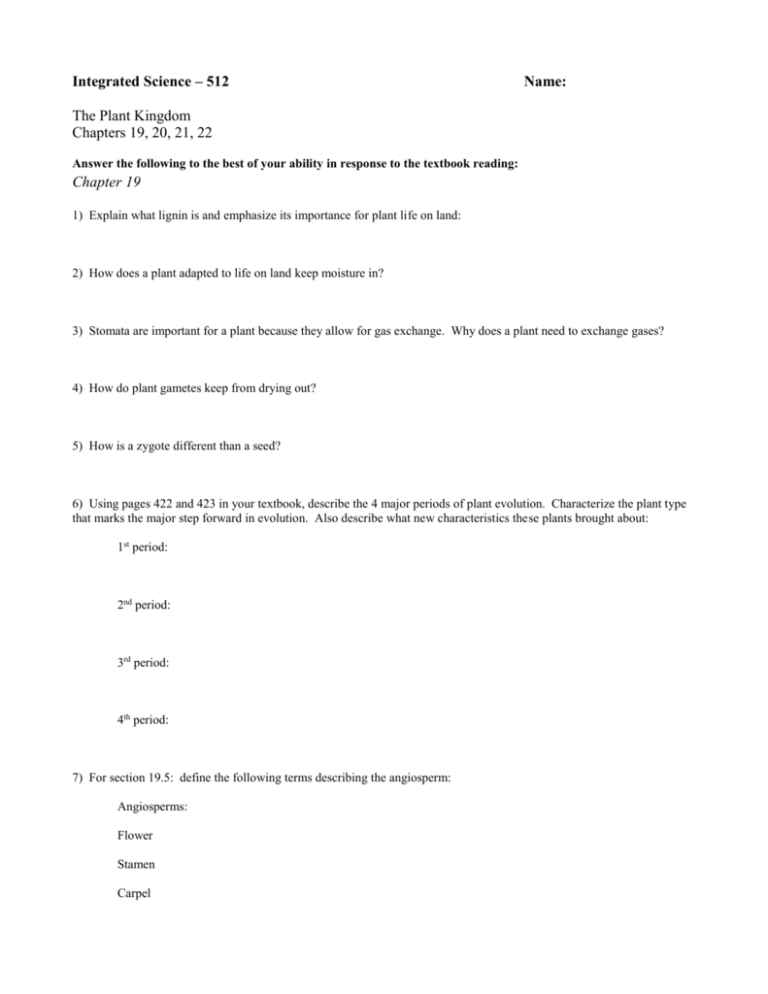
Integrated Science – 512 Name: The Plant Kingdom Chapters 19, 20, 21, 22 Answer the following to the best of your ability in response to the textbook reading: Chapter 19 1) Explain what lignin is and emphasize its importance for plant life on land: 2) How does a plant adapted to life on land keep moisture in? 3) Stomata are important for a plant because they allow for gas exchange. Why does a plant need to exchange gases? 4) How do plant gametes keep from drying out? 5) How is a zygote different than a seed? 6) Using pages 422 and 423 in your textbook, describe the 4 major periods of plant evolution. Characterize the plant type that marks the major step forward in evolution. Also describe what new characteristics these plants brought about: 1st period: 2nd period: 3rd period: 4th period: 7) For section 19.5: define the following terms describing the angiosperm: Angiosperms: Flower Stamen Carpel Endosperm Fruit 8) List 5 plants from your everyday life that are angiosperms. Chapter 20 1) Draw and label the angiosperm reproductive structure (the flower) as shown on page 442 of your textbook. For each structure, include a brief description of its function. 2) Describe three different methods of seed dispersal: 3) Contrast the functions of dermal tissue with vascular tissue: 4) Contrast and describe the functions of xylem and phloem: 3) What is the function of ground tissue? 4) Describe the function of structure of the following cell types: Parenchyma: Collenchyma: Sclerenchyma: 5) Describe the function of meristems in plants: 6) How is secondary plant growth different than primary growth? 7) What becomes wood in plants? Chapter 21 Section 21.1 1) Clearly explain why it is true to say that air and water are both necessary for plants to build carbohydrates that are made of carbon (C) and hydrogen (H) atoms: 2) List the mineral nutrients that plants must get form the soil to stay healthy: 3) Explain in detail the role that bacteria play in making nitrogen (N) usable for plants: 4) Describe the contents of most commercial fertilizers: Chapter 22 Section 22.1 1) Use the following table to list the 5 major plant hormones and their functions: Plant hormone Functions Section 22.2 1) Define tropism in your own words: 2) Use the following chart to list he 3 main types of tropisms, examples of them, and their advantages: Tropism type Definition example advantage 3) Use the following chart to explain how some plants deal with environmental stresses: Stress Coping mechanism Drought Flooding Salt disease Section 22.3 1) Explain the connection between photoperiodism and phytochromes:
